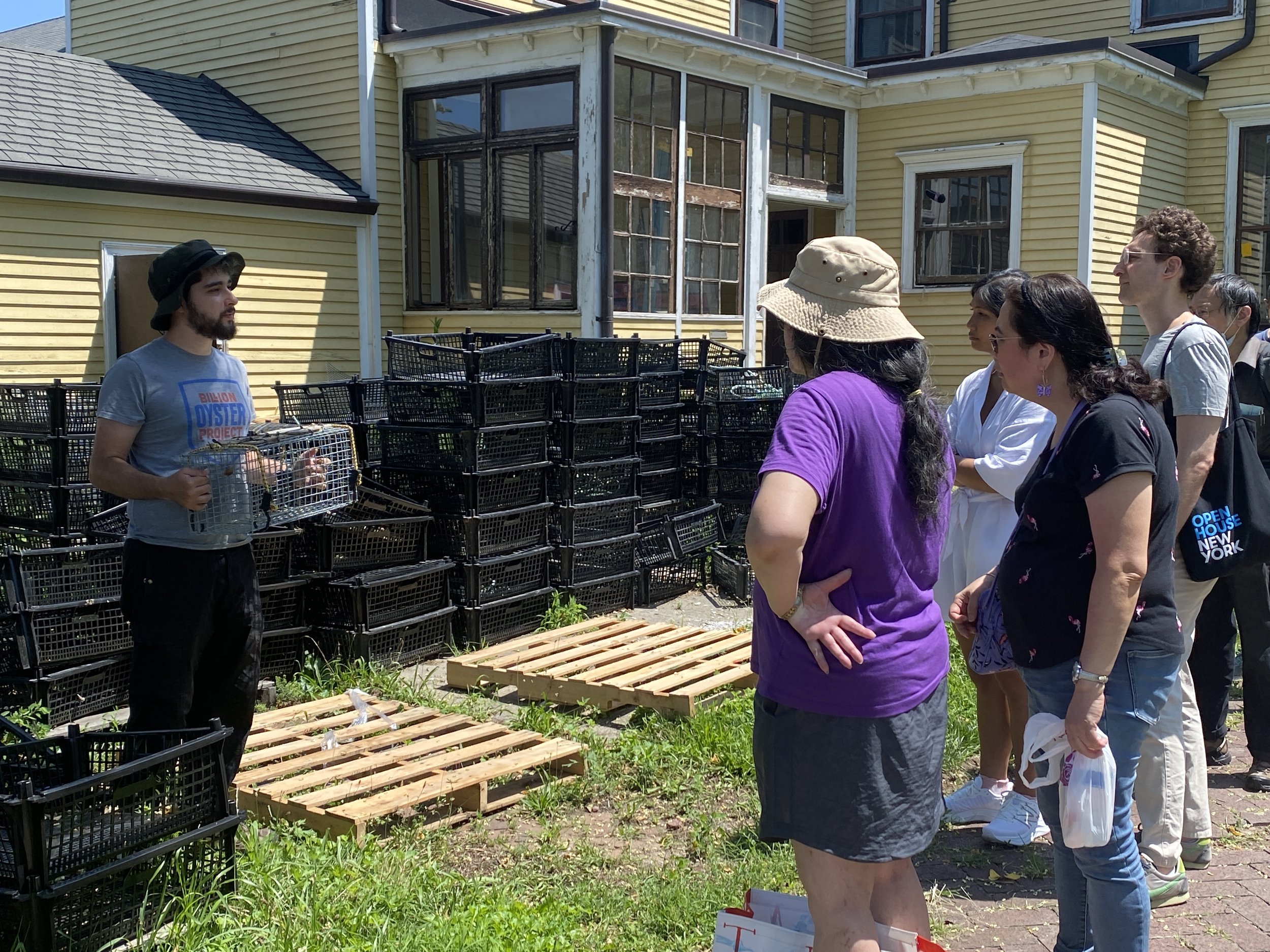New York City used to be called "The Oyster Capital of the World." You wouldn't say that now, however: there is less than half a percent of an estimated peak of 200,000 acres of oysters in NY Harbor and the surrounding waterways these days. At least sixteen of those acres are thanks to the Billion Oyster Project (BOP), a just-shy-of-ten-years-old nonprofit organization based on Governors Island that is intent on restoring one billion oysters to the area by 2035. Succeeding in their mission would bring countless benefits not only to the oyster population itself but to New York City and the downstate region as well. Our guide, Nicholas Ring of the BOP and a New York Harbor School alum, showed a group of us how the whole process works, its origins and purpose, and where they stand today on their goals.
For many years, Eastern Oysters coming from New York Harbor were abundant and affordable. Their prevalence led in 1833 to the founding of Sandy Ground in Staten Island, the oldest free black settlement in America, a community to where many oystermen fleeing restrictive industry practices down south relocated. Decades of overharvesting the oysters for food and dredging them for their shells (the calcium carbonate of their shell is a common component in cement) led to a precipitous decline in their numbers, to the point of near eradication. Their fate didn't turn around until 2014 when founders Murray Fisher and Pete Malinowski of the New York Harbor School (NYHS), a maritime school situated among the old army barracks on Governors Island, spearheaded the effort to restore their populations. The Billion Oyster Project was formally initiated soon after and has, still in conjunction with the NYHS, continued to work toward their eponymous goal.
The reason for the focus on oysters is the numerous benefits they offer to the waterways in which they live. As "filter feeders," they can remove pollution out of water. While they can filter some pollution out, other types of pollution are hazardous to oysters, so they can also be thought of as water quality indicators. Their colony structure, taking the shape of a vertically-growing reef, offers a damper to strong waves and storm surges, protecting surrounding coastlines. These reasons drive the mission of the Billion Oyster project.
Nicholas walked us through the process of how they restore oysters to the harbor. It begins with discarded oyster shells donated by many, many restaurants from around NYC. These shells, left to be cleaned and bleached by the elements out in an open lot, are used as the substrate on which new oysters can anchor themselves. Once those new oysters start to form their own shells and condense into a loose reef, the oysters are moved into cages and lowered into prime locations around the harbor. The oysters are then left to flourish on their own, giving rise to more oysters and larger reefs. Oysters anchor themselves to the spot where they landed as baby oysters and never move, giving rise to the reefs.
A special thanks to the BOP and especially Nicholas Ring for providing us with this wonderful tour! If you'd like to get involved with the BOP, they are always looking for volunteers. You can sign up here. (link: https://www.billionoysterproject.org/volunteer)
Check out a few images from the event, including a touch tank where we examined the "rings" on oyster shells that can reveal their age, at the link here.
Credits for this writeup and photos from this event go to Glenn Doherty.

